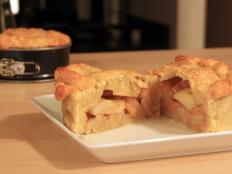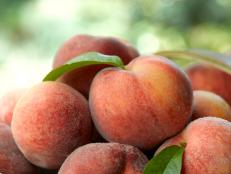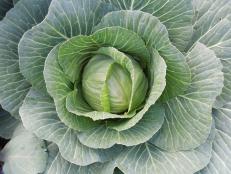Can You Freeze Fresh Pineapple?
Next time you spot a great deal on pineapple, stock up. With minimal fuss, you can freeze this tasty, nutritious fruit.

2013, Image courtesy of Ben Rollins
Fresh pineapple doesn't store long at room temperature—two days, tops. You might get an additional three days if you refrigerate it. So even when you find pineapple at a great price, you may hesitate to buy in bulk, wondering, "Can you freeze fresh pineapple?" The fact is, you can, and the process is pretty quick and simple.
The trickiest part of freezing pineapple is picking out a ripe one. The peak season for fresh pineapple runs from March to July, but pineapples are available for sale in most grocery stores year-round. To choose a good pineapple, start with smell. A ripe pineapple has a sweet, tropical, pineapple smell. It should feel heavy for its size and have a nice, plump shape.
Color varies depending on variety. Some are green when ripe; others are yellow-gold. Check the bottom for any sign of mold. If you see even a speck, put that pineapple back. Other signs to avoid include soft or dark spots and a fermented smell. Yellowed leaves and darkened eyes also indicate an over-ripe fruit.
Fresh pineapple doesn't ripen once it's picked, so don't leave it sit out thinking it will sweeten up like other fruits. Pineapples don't have any starch reserves that can turn to sugar, so the only thing that happens when you let it sit out is that it over-ripens and starts to ferment.
If you buy a bunch of pineapples on sale to freeze, you need to tackle the task within a day or two. You can extend the freshness window to three to five days by placing pineapples in perforated plastic bags and putting them in the refrigerator. But it's always better to freeze fruits as soon as possible after harvest or purchase.
Cutting a pineapple isn't difficult. Remove the top and bottom, cut in half, and slice away the outer skin. Don't toss it; you can squeeze juice out of this section for fresh drinking or freezing. Many people remove the core and compost it, but a pineapple core contains bromelain, a naturally-occurring anti-inflammatory. Slice and freeze the cores for juicing and drinking.
Cut pineapple into whatever size chunks or slices you want. Place the pineapple pieces on a baking tray. Because pineapple is juicy, it's wise to line the tray with parchment, plastic wrap, or wax paper first. This simple step makes removing the frozen pineapple easier.
Place the tray into the freezer to quick freeze the pineapple pieces. After everything is frozen solid, pack pineapple into freezer bags or containers. Remove as much air as possible from bags. A vacuum sealer works well, as does a straw. If you cut pineapple into pieces that approximate the size of canned pineapple chunks, you should be able to fit about half a pineapple into a quart-size freezer bag.
15 Top Fruit Trees for Home Gardens
See All PhotosThawed pineapple tastes great and has a texture that's similar to fresh. You can eat thawed pineapple by itself or mixed with other fresh fruit. It also works well as a pizza topping or served with ice cream.
Choose frozen pineapple for a healthy, refreshing snack. Thawed slightly, you can mix frozen pineapple with any type of juice to serve a slushy dessert. Freeze pineapple with grapes or cubed cantaloupe to make a delicious frozen fruit blend. Frozen pineapple works well in pineapple upside down cake and other baked goods. Thaw pineapple before adding to cake or muffin batters. You can also use frozen pineapple to create jam, marmalade, or chutney.
To use pineapple cores for their anti-inflammatory properties, pulse thawed core slices in a blender or food processor. Add a little water to create a slurry you can drink. Don't add other fruits to this mixture, or the bromelain will break down the fruits. If you sip it straight, the bromelain will attack areas of inflammation in your joints.
If you want, you can also puree pineapple before freezing. Freeze the puree in ice cube trays. Once frozen solid, pack the pineapple cubes in freezer bags. These cubes make a tasty addition to smoothies and daiquiris. You can also toss pineapple cubes into juice, fruit teas, or lemonade for a chilling, flavorful effect. For best quality, eat frozen pineapple—chunks or puree—within six to 12 months.
How to Freeze Fruit
Learn methods for freezing fruit so you can have fresh taste long after the growing season ends.

















































